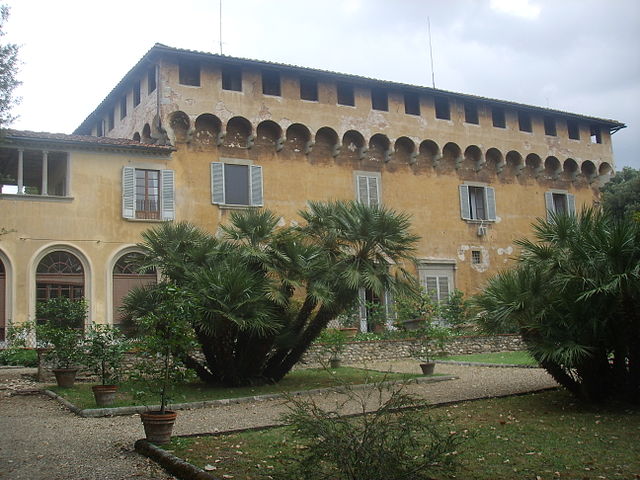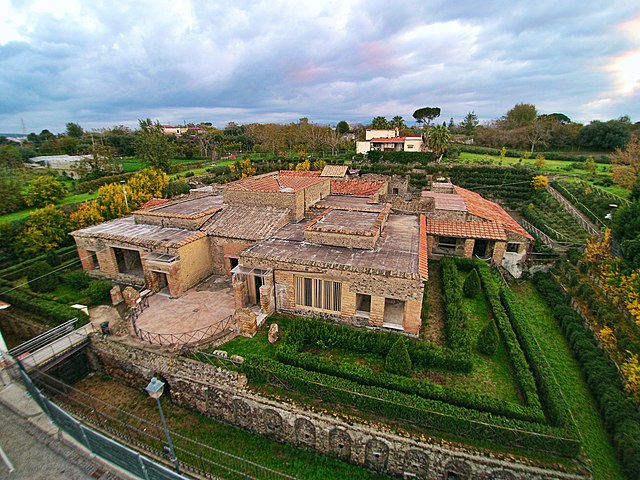Villa Medici at Cafaggiolo
The Villa Medicea di Cafaggiolo is a villa situated near the Tuscan town of Barberino di Mugello in the valley of the River Sieve, some 25 kilometres north of Florence, central Italy. It was one of the oldest and most favoured of the Medici family estates, having been in the possession of the family since the 14th century, when it was owned by Averardo de' Medici. Averardo's son, Giovanni di Bicci de' Medici, is considered to be the founder of the Medici dynasty.
Castello Mediceo di Cafaggiolo, in a view by Giusto (or Gustav) Utens, 1599.
Villa Medicea di Careggi, the first of the Florentine villas, was also created for Cosimo de' Medici by Michelozzo from an existing castle.
A villa is a type of house that was originally an ancient Roman upper class country house. Since its origins in the Roman villa, the idea and function of a villa have evolved considerably. After the fall of the Roman Republic, villas became small farming compounds, which were increasingly fortified in Late Antiquity, sometimes transferred to the Church for reuse as a monastery. Then they gradually re-evolved through the Middle Ages into elegant upper-class country homes. In the early modern period, any comfortable detached house with a garden near a city or town was likely to be described as a villa; most survivals have now been engulfed by suburbia. In modern parlance, "villa" can refer to various types and sizes of residences, ranging from the suburban semi-detached double villa to, in some countries, especially around the Mediterranean, residences of above average size in the countryside.
The Villa Medici in Fiesole with early terraced hillside landscape by Leon Battista Alberti
The Villa Tamminiemi, an Art Nouveau styled villa and house museum in Helsinki, Finland
Villa of the Mysteries in Pompeii seen from above
Model of Fishbourne Roman Palace, a governor's villa on the grandest scale






